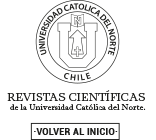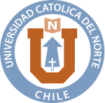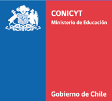Nuevas evidencias incas entre Collahuasi y Río Frío (I y II Regiones del norte de Chile)
DOI:
https://doi.org/10.22199/S07181043.1994.0011.00009Resumen
El llamado “gran despoblado”, se sitúa en un inmenso desierto de altura, con escasa agua y casi totalmente desocupado, pero rico en vestigios bien conservados tanto de los períodos prehistóricos tempranos como tardíos. Desafortunadamente, la explotación de sus recursos en la actualidad, especialmente la exploración y desarrollo de su riqueza minera, amenaza sus delicados caracteres superficiales y por lo tanto requiere de un rápido registro. Por eso, hemos trabajado en torno a la ocupación inca, en proyectos originalmente vinculados con el uso arcaico de las cuencas de Atacama y Punta Negra. La presencia inca hacia el sur, especialmente en el Norte Chico, es conocida por los estudios pioneros de Iribarren y Bergholz (1971), Niemeyer y Silva (1977), Rivera e Hyslop (1984) y, más recientemente, a través del trabajo de Stehberg y Carvajal (1988). En esta oportunidad se presentan nuevas evidencias correspondientes al sector Collahuasi-Río Negro, en las tierras altas de la I y II regiones de Chile, como un avance preliminar del Proyecto Inca patrocinado por The National Geographic Society.
ABSTRACT
The northern part of Chile, called “gran despoblado”, is located in a immense and high desert with scarse water and totally unpopulated, but it has wellkept remains belonging both early and late prehistoric periods. Unfortunately, the present working and development of its mineral wealth threaten its fine superficial features and it has to be recorded as soon as possible. For that reason we have worked around the inca occupation, we have worked in projects originally related to the arcaic use of the Atacama and Punta Negra basins. The inca presence towards the south lands, specially in the Norte Chico, is known through the pioneer investigation carried out by Iribarren and Bergholz (1971), Niemeyer and Silva (1977), Rivera and Hyslop (1984) and recently through the study made by Stehberg and Carvajal (1988). In this opportunity new evidences belonging to the Collahuasi area-Río Negro, in the highlands of the first and second regions are shown, and also the preliminary advance of the Inca Project by The National Geographic Society.
This essay constitutes a synthesis of the preliminary results of an investigation of the Inca Road, its exact route, structures, and purpose, as supported by The National Geographic Society (4654-91, Mapping inca installations in the Atacama: Relations with local peoples). Attention has focussed on Catarpe Tambo, which appears to have been an administrative center for the road complex between at least 22° and 25° S Lat. Large parts of the system between Turi and Chiu Chiu in the north, and Río Frío in the south, were located and recorded by the authors, specially from 1991 through 1993. Abandoned after the Inca Period, Catarpe evidences storage, metallurgy, protective fortifications, ritual, concentration of precious goods, and even administrative functions (quipu) that are often absent at the smaller tambos. Much of the road system was rerouted during the Spanish Period, so that it could be traversed by groups with horses and mules, leaving other, subsequently unused parts of the original Inca Road inperfect condition. Untrodden portions of the original roadway often feature distinctive intact hitos, curbing stones, stairs, and associated artifacts such as pottery and sandals.
Cómo citar
Número
Sección

Todos los trabajos publicados en Revista Estudios Atacameños (eISSN:0718-1043) están sujetos a una licencia Creative Commons Reconocimiento 4.0 Internacional
Los autores continúan como propietarios de sus trabajos, y pueden volver a publicar sus artículos en otro medio sin tener que solicitar autorización, siempre y cuando indiquen que el trabajo fue publicado originariamente en Revista Estudios Atacameños (eISSN:0718-1043).

















